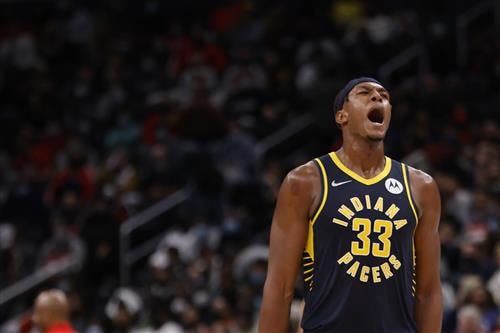
The Raiders trading for Davante Adams was supposed to cause problems for defenses, not quarterback Derek Carr.
Although opposing defenses are fixated on stopping Adams, he’s also causing a dilemma for his new quarterback — one that Aaron Rodgers was able to effortlessly navigate when he played with the All-Pro receiver. Adams is seeing a lot of double coverage, but you can’t just avoid throwing to your top receiver because of that. How much do you force-feed him the ball, and at what point does that hurt an offense’s efficiency?
Since a strong debut for the Carr-Adams connection in Week 1 — when Adams had 10 catches for 141 yards and a touchdown on 17 targets — the duo has had a difficult time connecting. In the last two weeks, Adams has seven receptions for 48 yards and two touchdowns on 17 targets. Among players with at least 20 targets, Adams ranks 31st in expected points added (EPA) per target, according to TruMedia. There have been times when he is open and Carr can’t find him, and there have been other times when Carr locks on to Adams and doesn’t see other open receivers.
The advertised chemistry between them from their time at Fresno State has to be rebuilt from the ground up in a Josh McDaniels offensive system featuring two other Pro Bowl targets, tight end Darren Waller and slot receiver Hunter Renfrow. The Raiders’ frustrating offensive effort against the Titans was a fitting amalgamation of the problems this offense has faced and will continue to face until they figure out how to properly balance their target share.
The Titans played a lot of Cover-2 zone, as well as Cover 7 to bracket Adams and Waller. These are the same coverages teams used to defend the Chiefs when Kansas City had Tyreek Hill and Travis Kelce.
Cover 7 allows the defense to bracket two receivers while playing one-on-one everywhere else. Here, the Titans had a bracket on Adams on the weak side (bottom of the screen) and Waller in the No. 2 position on the other side. Everyone else was covered one-on-one.
Some teams might play the underneath bracket defender with outside leverage, so he can funnel the receiver toward the deep safety, and sometimes one of the bracket defenders might fall off the receiver depending on the release. But the Titans had “hard” doubles on Adams and Waller throughout the game, meaning they maintained the brackets no matter what. They also had the underneath bracket defender play with inside leverage, presumably because they were afraid of Adams beating them on slants.